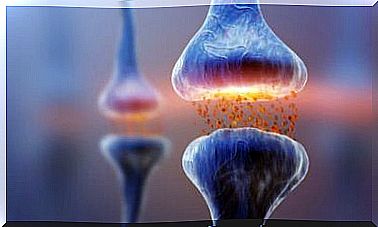Differences Between Alzheimer’s And Parkinson’s

Do you know the differences between Alzheimer’s and Parkinson’s? First of all, it is good to know that these are the most common forms of dementia. Specifically, according to data from the World Health Organization (WHO), Alzheimer’s constitutes 60-70% of dementia cases.
However, these are two very different pathologies that do not always, among other things, cause dementia (although in most cases this is the case). Between 20-60% of people with Parkinson’s will suffer from dementia.
The study by Buter et al. (2008) published in the journal Neurology , which was attended by 233 people with Parkinson’s, states that about 60% of patients suffered from dementia over the next 12 years.
But what is dementia? The set of symptoms that occur as a consequence of a neurological damage or disorder : loss or weakening of mental faculties, in particular relating to the cognitive area (such as memory loss or altered reasoning), behavioral (behavioral alterations) and personality (changes in personality, irritability, emotional lability, etc).

The most common neurodegenerative diseases: Alzheimer’s and Parkinson’s
We will group the differences between Alzheimer’s and Parkinson’s into blocks, extracted from two reference psychopathology textbooks: Belloch, Sandín and Ramos (2010) and the DSM-5 (APA, 2014).
First block of differences between Alzheimer’s and Parkinson’s
Cognitive symptoms
The first difference between Alzheimer’s and Parkinson’s concerns cognitive manifestations. In Parkinson’s, errors occur during the retrieval of data in memory, while in Alzheimer’s they concern the previous moment, that is, the encoding of the data. Memory and attention are more impaired in the case of Alzheimer’s.
Motor symptoms
The person with Parkinson complains of the so-called parkinsonisms, a clinical picture characterized by the following symptoms: rigidity, tremor, bradykinesia (slowing of movement) and postural instability. On the contrary, in Alzheimer’s it is a very rare event.
In particular, rigidity and bradykinesia are frequent in Parkinson’s, while in Alzheimer’s these symptoms occur only occasionally. Finally, tremor is a typical symptom of Parkinson’s, but rare in Alzheimer’s.
Psychotic and other symptoms
Both neurological diseases can cause symptoms other than those listed above. For example, in Alzheimer’s, delirium appears occasionally, while in Parkinson’s it is practically absent. Let us remember that delirium is a disorder of organic cause that mainly affects consciousness and attention.
As for psychotic symptoms, both pathologies can cause visual hallucinations (more or less in the same proportion). Delusions may also appear, frequent in Alzheimer’s and occasional in Parkinson’s.
Pathological symptoms
The differences between Alzheimer’s and Parkinson’s are also cerebral (substances, neurotransmitters, atypical structures, etc.). While senile plaques – extracellular deposits of molecules in the gray matter – are typical of Alzheimer’s, they rarely appear in Parkinson’s.
The same happens with other structures, such as neurofibrillary clusters, frequent in Alzheimer’s, but much rarer in the case of Parkinson’s.

On the other hand, Parkinson’s frequently causes Lewy body dementia. As for neurotransmitters, we know that acetylcholine deficiency often occurs in the brains of people with Alzheimer’s, but rarely in people with Parkinson’s.
Finally, Parkinson’s is accompanied by a dopamine deficiency which does not occur in Alzheimer’s.
Second block of differences between Alzheimer’s and Parkinson’s
Age and incidence
Among the differences between Alzheimer’s and Parkinson’s we can also mention the age in which they occur. In this sense, Parkinson’s generally appears around the age of 50-60, while Alzheimer’s from 65 years and up. Furthermore, the incidence of Alzheimer’s disease is higher than that of Parkinson’s. According to the DSM-5 (2014), it is 6.4% in Europe.
Type of dementia
The person with Alzheimer’s will have cortical dementia, which is that it affects the cerebral cortex. In Parkinson’s disease, on the other hand, we speak of subcortical dementia, therefore of the subcortical areas of the brain; this will also be later than the first.
Cortical dementias usually manifest with cognitive symptoms, while subcortical ones with motor symptoms. However, they can appear together, to a greater or lesser extent.
Specifically, cortical dementias include: Alzheimer’s, frontotemporal dementia, Creuzfeldt Jacob dementia and Lewy body dementia; the subcortical ones are Parkinson’s disease, Huntington’s disease and HIV-associated dementia.









